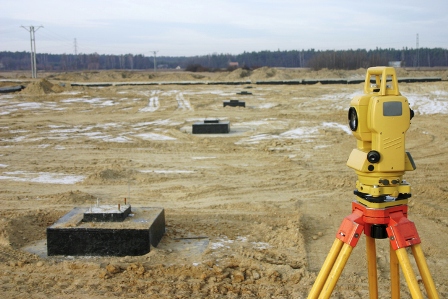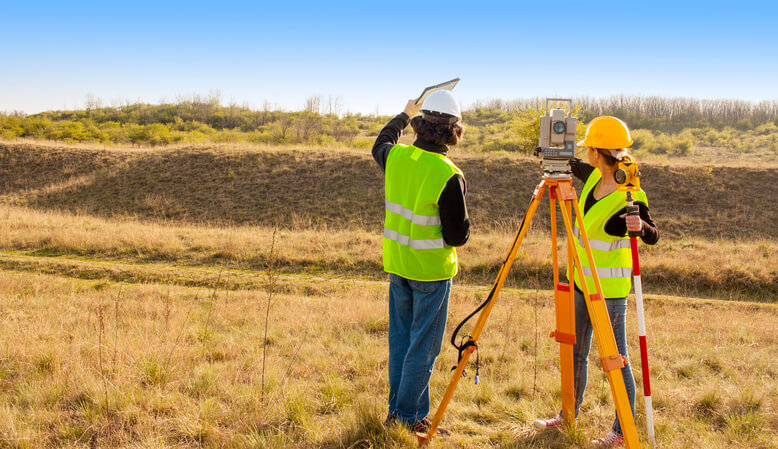Elevate Your Job's Success with a Topography Survey
Wiki Article
Charting the Training Course: Changing Evaluating Solutions for Improved Environmental Preservation and Source Monitoring
Are you interested in the future of evaluating solutions and their effect on environmental conservation and source monitoring? Look no more. This post will certainly take you on a trip of technology and exploration, as we explore the developments in surveying innovation and methods that are transforming the field. Discover how incorporating Geographic Info Equipment (GIS) and leveraging remote noticing techniques are enhancing preservation initiatives. Join us as we discover the crucial duty of surveying experts in driving lasting growth and conservation.The Importance of High-Quality Surveying in Environmental Preservation
Top quality surveying is crucial for effective environmental conservation and source monitoring. topographical surveyors. Precise data is extremely important when it comes to shielding the setting and managing our priceless resources. With premium surveying, you can gather specific information concerning the land, water bodies, and ecosystems, enabling you to make enlightened choices and take suitable activitiesBy utilizing premium checking strategies, you can precisely map out the terrain, determine sensitive areas, and analyze the effect of human tasks. This data is necessary for developing effective preservation techniques and executing lasting source monitoring plans. With accurate surveying, you can check adjustments in the atmosphere over time, enabling you to track fads, recognize prospective dangers, and take timely steps to minimize any damaging results.
In addition, top quality surveying aids in the recognition and conservation of essential natural habitats and biodiversity hotspots (topographical survey london). By drawing up these locations properly, you can shield them from encroachment and guarantee their lasting survival. In addition, exact evaluating data aids in the identification of environmentally delicate locations, permitting for the establishment of protected zones and the application of correct conservation actions
Innovations in Checking Modern Technology for Source Management
You can quickly remain upgraded on the latest advancements in surveying technology for far better source monitoring. As innovation remains to advancement, so does the area of evaluating. New methods and tools are continuously being created to enhance the precision and performance of evaluating procedures, eventually leading to a lot more efficient source management.Among the vital innovations in checking innovation is using drones. These unmanned airborne automobiles have actually transformed the way surveys are conducted by offering a bird's- eye sight of the land. Drones geared up with high-resolution cameras and LiDAR sensing units can record comprehensive imagery and gather information in a portion of the time it would take making use of conventional checking approaches. This not only conserves time and money yet also enables more constant and comprehensive surveys, leading to much better source management.
One more crucial development is using Geographic Info System (GIS) technology. GIS allows surveyors to gather, analyze, and picture data in a spatial context. By incorporating data from different sources, such as satellite images, airborne photographs, and ground studies, GIS allows property surveyors to produce topographic maps and versions that can be utilized to make enlightened decisions about resource administration.
Integrating Geographic Info Systems (GIS) in Surveying for Enhanced Preservation Initiatives
By integrating Geographic Information Systems (GIS) right into your checking practices, you can greatly enhance your conservation efforts. GIS permits you to gather, examine, and picture spatial information, offering valuable understandings into the setting and sources. With GIS, you can accurately map and monitor communities, track adjustments gradually, and determine areas of high preservation worth.One of the essential advantages of utilizing GIS in surveying is the ability to make informed decisions based upon detailed information. By superimposing different layers of info, such as land usage, plants cover, and wild animals habitats, you can determine areas that require instant attention for conservation. setting out in engineering survey. This helps you prioritize your efforts and allot sources much more successfully
GIS likewise enables you to work together and share information with other stakeholders included in conservation efforts. You can conveniently communicate your suggestions and findings to government companies, non-profit organizations, and local neighborhoods, promoting a collective approach in the direction of environmental security.

Leveraging Remote Noticing Techniques for Environmental Monitoring and Surveying
Leveraging remote picking up strategies enhances the efficiency and precision of ecological tracking and surveying. By using advanced satellite images, airborne digital photography, and various other remote picking up modern technologies, you can gather important information regarding the Earth's surface area and its functions without literally being present in the field. This enables you to cover big locations promptly and cost-effectively, conserving both time and sources.With remote noticing, you can get high-resolution images of the environment, enabling you to recognize and check changes in land cover, plant life health and wellness, and water bodies. This info is crucial for assessing the influence of human tasks on environments and managing natural deposits successfully. Additionally, remote noticing strategies supply valuable understandings right into environment patterns, enabling you to analyze weather, monitor temperature level changes, and forecast natural calamities such as typhoons or wildfires.
Furthermore, remote noticing can be used to identify and monitor pollution resources, track the spread of invasive types, and examine the quality of air and water. By utilizing spooky analysis, you can determine details toxins and their sources, assisting to create strategies for air pollution control and prevention. This modern technology likewise plays an essential duty in wildlife conservation, as it allows you to monitor animal habitats, track movement patterns, and recognize locations of high biodiversity.
The Role of Evaluating Specialists in Sustainable Advancement and Conservation
With remote address picking up strategies, evaluating professionals play an essential role in promoting sustainable growth and conservation efforts. As an evaluating expert, you are at the leading edge of utilizing innovative modern technology to collect important information about the setting. With airborne and satellite imagery, LiDAR, and other remote noticing devices, you are able to gather detailed and accurate information about land cover, plant life, water resources, and various other vital all-natural attributes.In partnership with various other professionals, such as environmental scientists and policymakers, you add to the formulation of lasting advancement strategies and preservation approaches. Your experience helps in identifying prospective disputes between development and conservation goals, enabling stakeholders to make informed decisions that stabilize financial growth with environmental management.
Overall, as an evaluating expert, you have a critical function in promoting lasting development and preservation initiatives. Your abilities in remote noticing and data analysis are important in supplying the necessary information and insights for efficient environmental administration and preservation.
Final Thought
In verdict, checking solutions play an important duty in boosting ecological preservation and source management. topographical survey. By making use of ingenious technologies such as geographical information systems (GIS) and remote noticing techniques, surveying experts can properly collect information to support conservation initiatives.Are you interested in the future of checking solutions and their impact on ecological preservation and resource management? Furthermore, accurate evaluating information help in the recognition of environmentally sensitive areas, permitting for the establishment of safeguarded areas and the application of correct conservation measures.

In final thought, surveying services play a critical role in boosting environmental conservation and source administration. By making use of cutting-edge technologies such as geographical information systems (GIS) and remote sensing techniques, checking professionals can precisely gather data to sustain conservation initiatives.
Report this wiki page